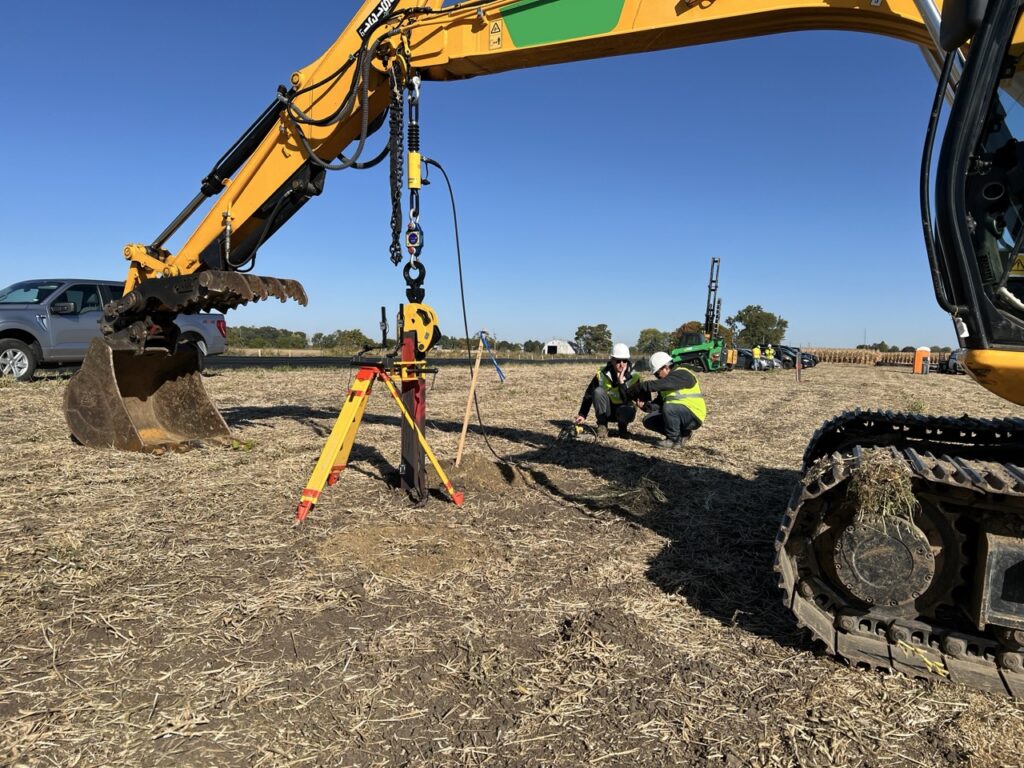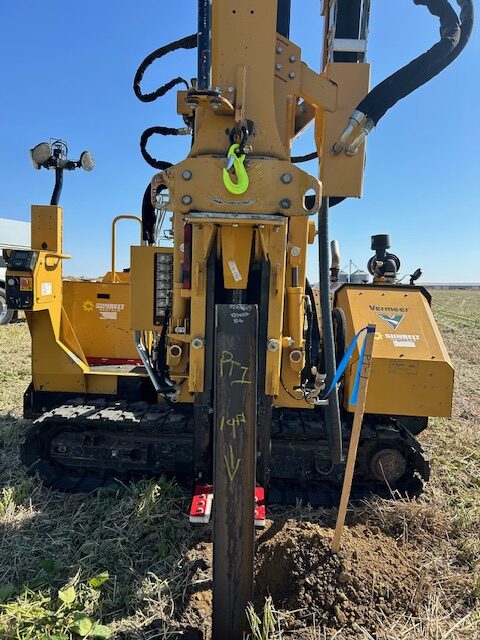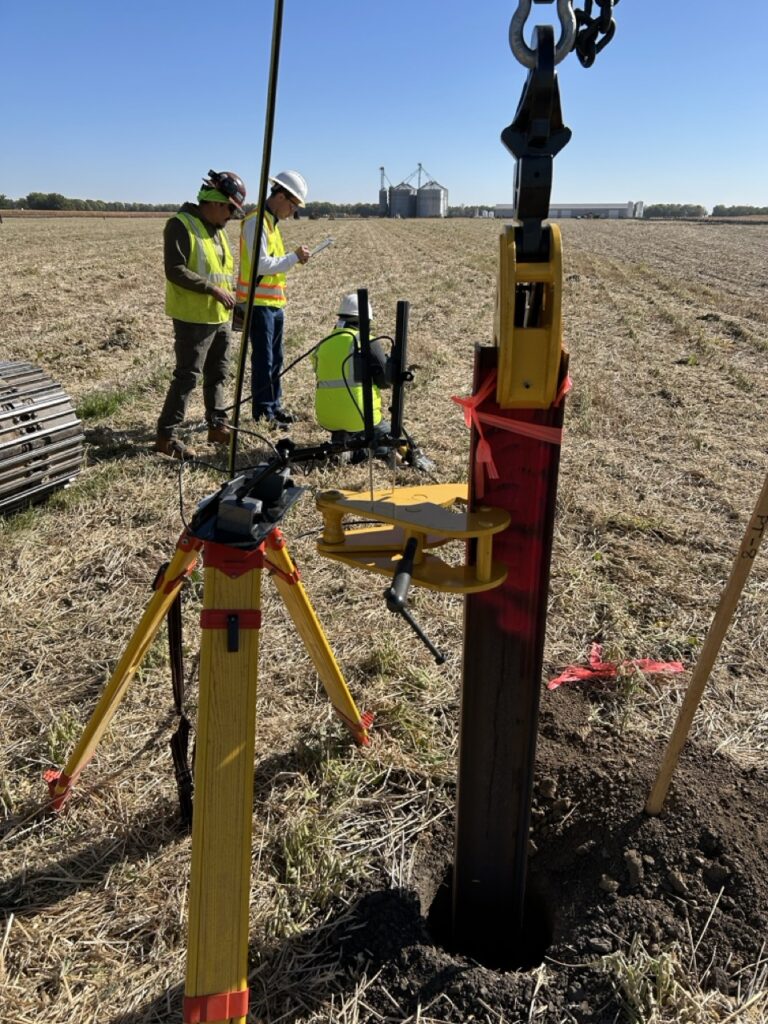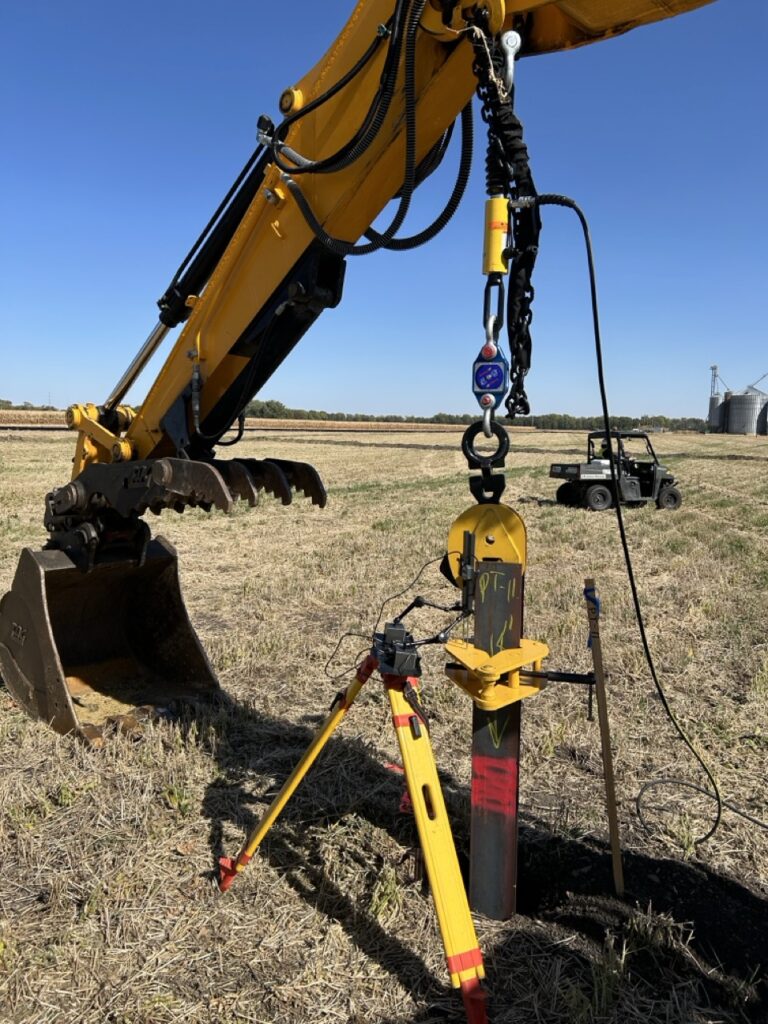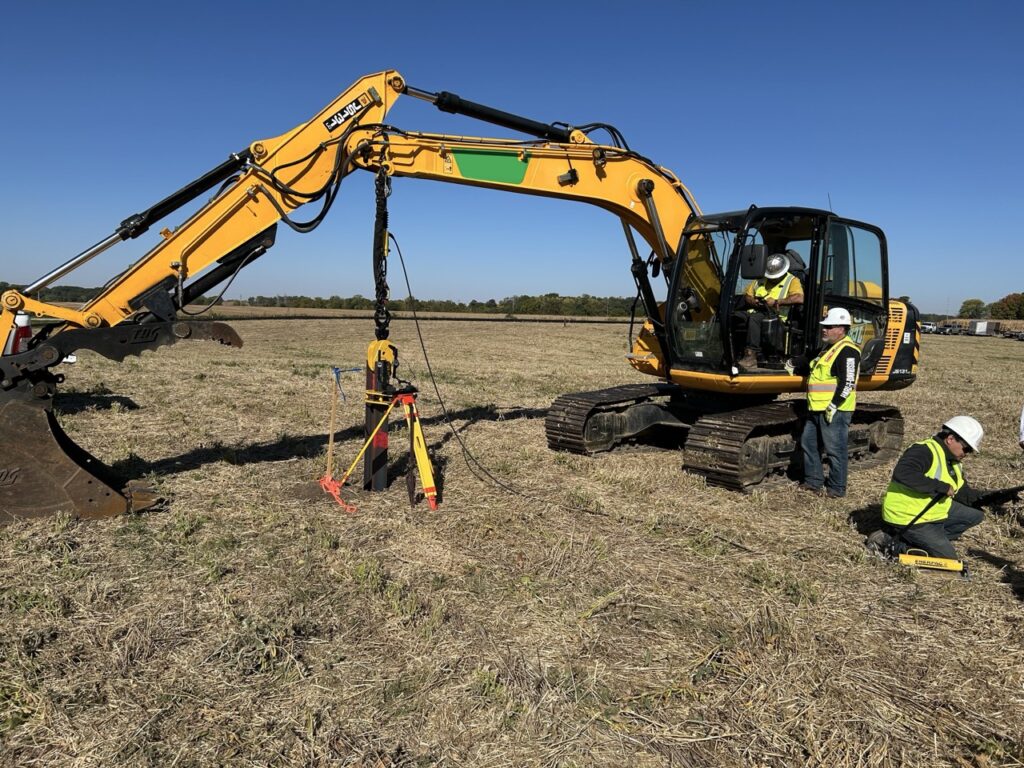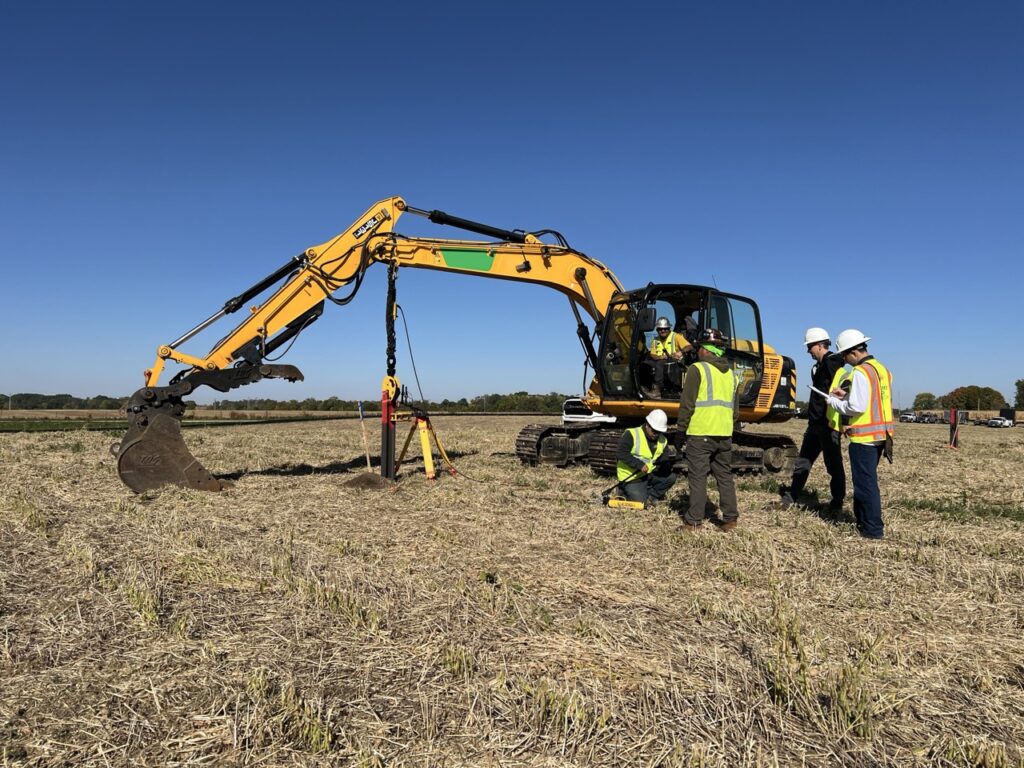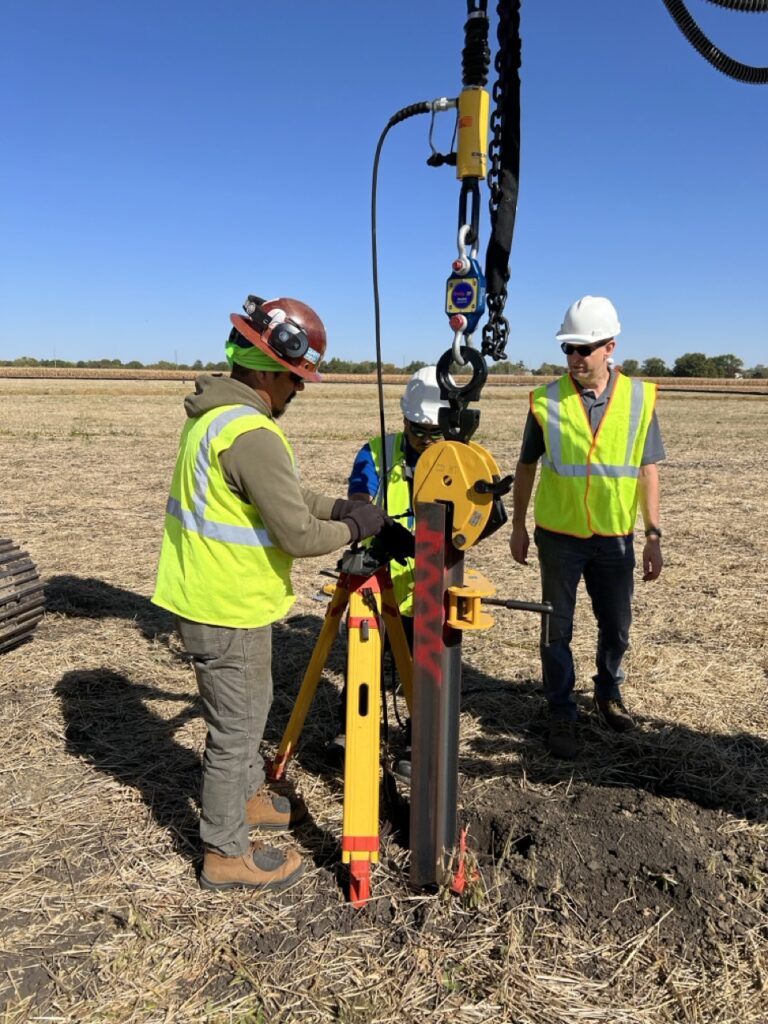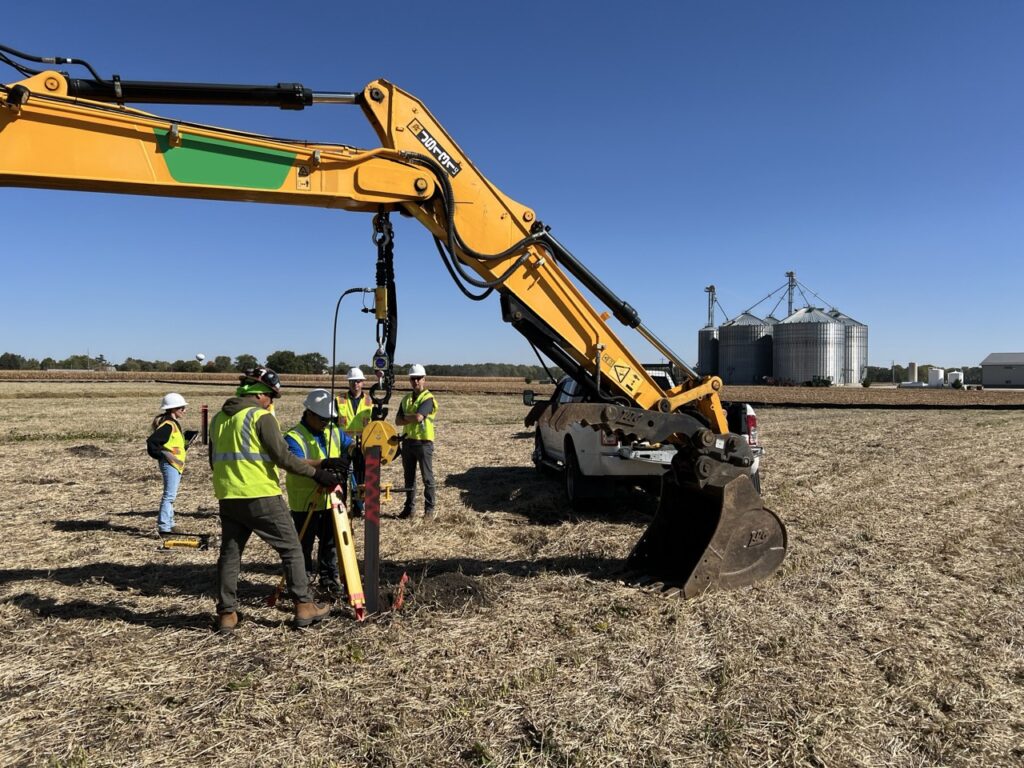Geotechnical Investigation and Engineering: ~30-Acre Solar Farm Array in Central Illinois
Pioneer was contracted to provide geotechnical engineering services for a proposed Solar Farm Array in Central Illinois. In support of the proposed solar farm array construction, Pioneer performed a geotechnical investigation with the scope of work including soil borings, pile load testing, and field soil resistivity.
The geotechnical investigation for the proposed solar array included soil borings performed using an ATV-mounted Geoprobe 3126GT drilling rig advancing soil borings up to depths of 20 feet using hollow-stem augers. Sampling procedures followed ASTM Standard D-1586, in addition to bulk sample collection at specified locations for various laboratory tests. All samples were returned to Pioneers lab for further examination, classification, and testing including Moisture Content, Unconfined Compressive Strength using a calibrated pocket penetrometer and a Rimac machine, and Dry Density. As part of the solar testing program requirements, Pioneer performed Soil Resistivity field testing using the Wenner 4-Point test method. Bulk samples recovered during drilling operations were used for specified laboratory tests including Thermal Conductivity, Soil Corrosion/Corrosivity, Electrical Resistivity, Grain Size Analysis, Atterberg Limit, and Standard Proctor Test.
Test piles were also installed at the site near the boring locations for Axial Tensile and Lateral Load testing. Non-galvanized W6x9 piles measuring 14 feet long were installed at the site and were left to set a minimum of 48 hours before testing. The test piles were installed using a Vermeer PD10 Pile Driver track rig and an excavator machine was used as the reaction frame for the load testing. The Axial Tensile and Lateral Load testing was performed to the total factored design loads of 10,000 pounds for the Axial Tensile tests and 7,000 pounds for the Lateral Load tests, or until displacement measured to exceed 1 inch.
Pioneer’s engineers provided in-depth research and analysis for the site to ensure the Client was provided with pertinent, site-specific information. Curated information included a cursory review of historical photographs as well as in-depth research on local geology, active/historical mining activity, and evidence of mine subsidence. All requested information for foundation design was provided in the report including, but not limited to, bearing capacity, skin friction, lateral earth pressure, frost heave analysis, seismic site class, equipment pad and access road recommendations, and more. Pioneer also curated a comprehensive report including details of the test pile installation and test procedures, all relevant test data, associated graphs, and a project photographic log.

